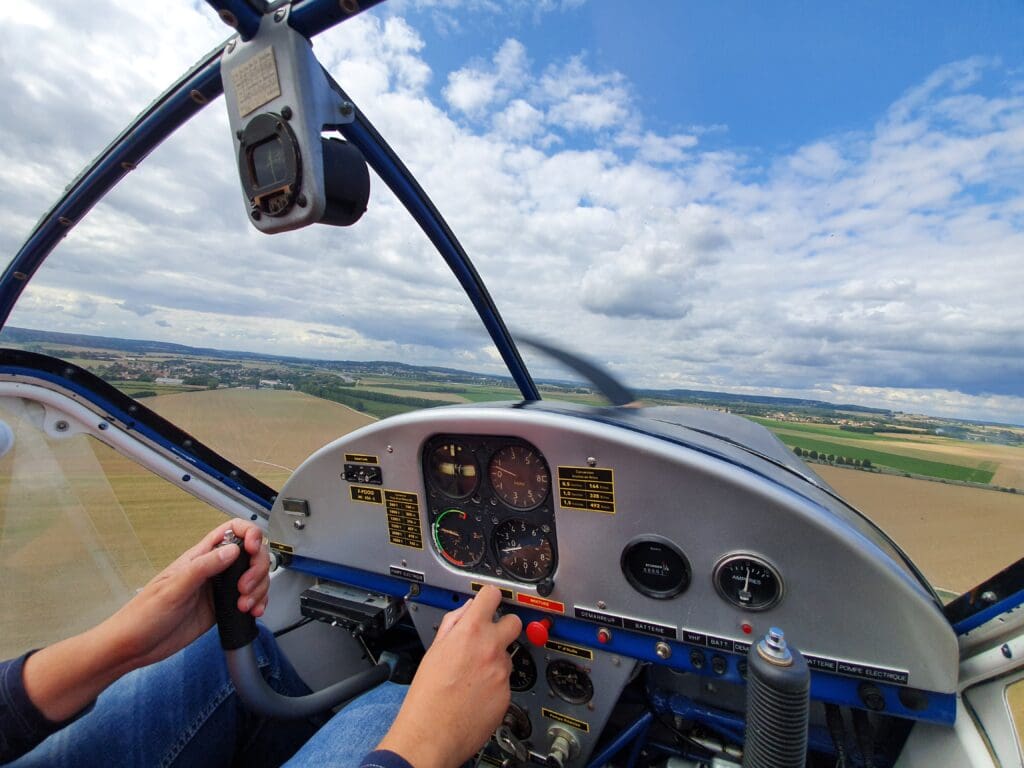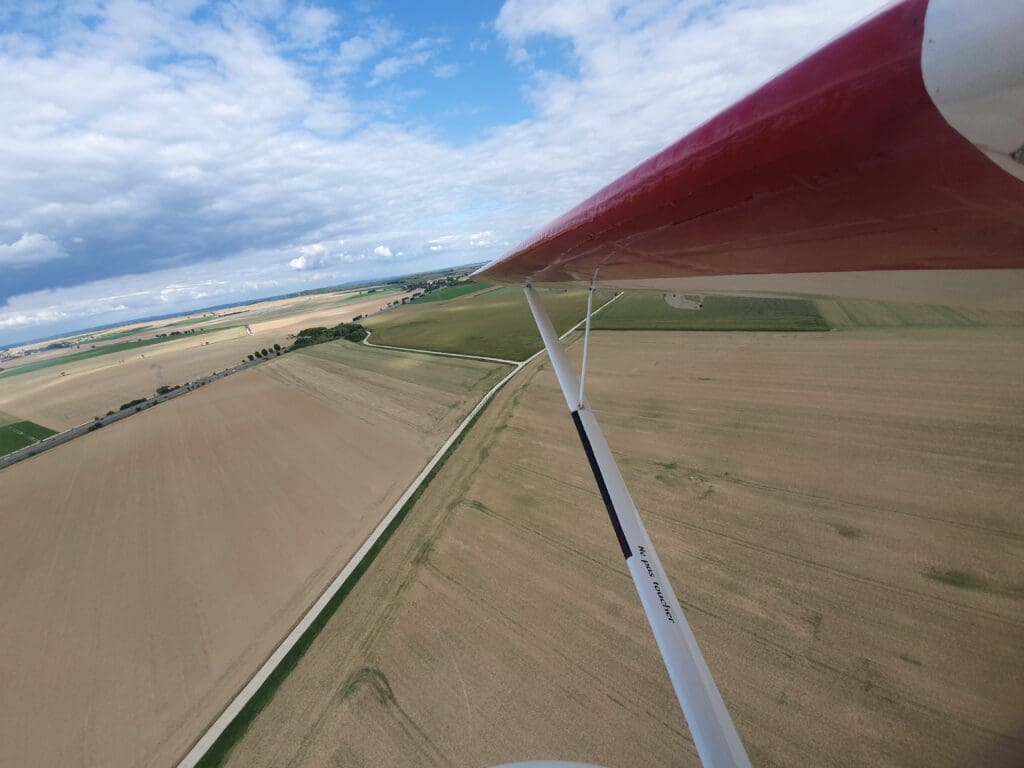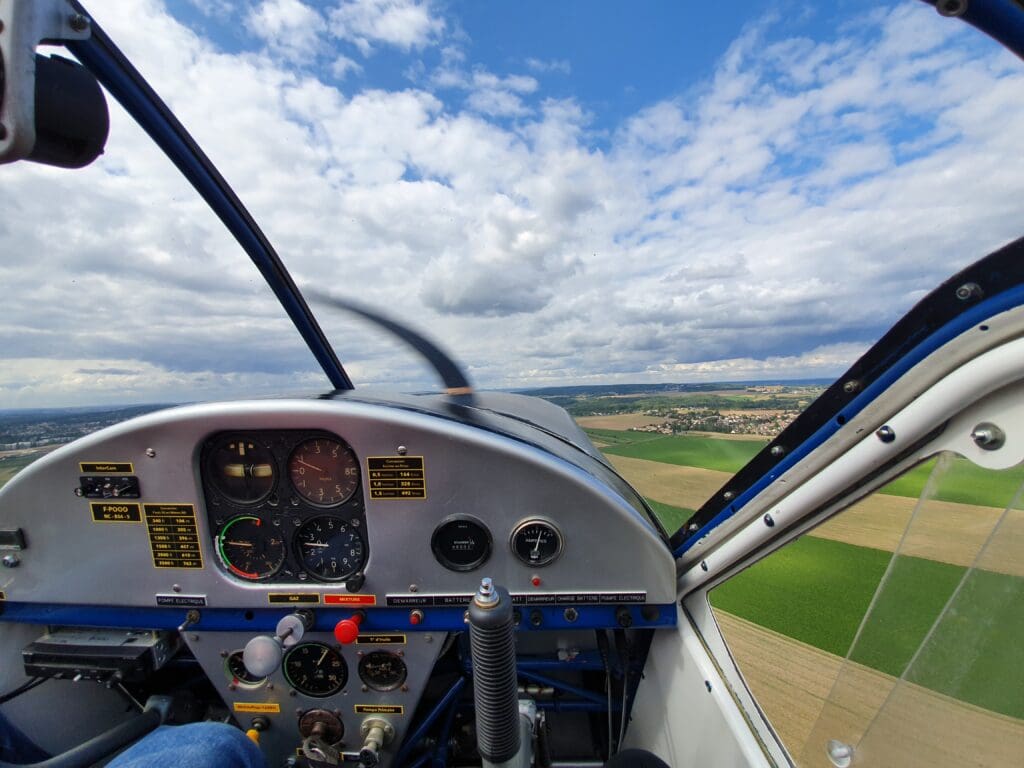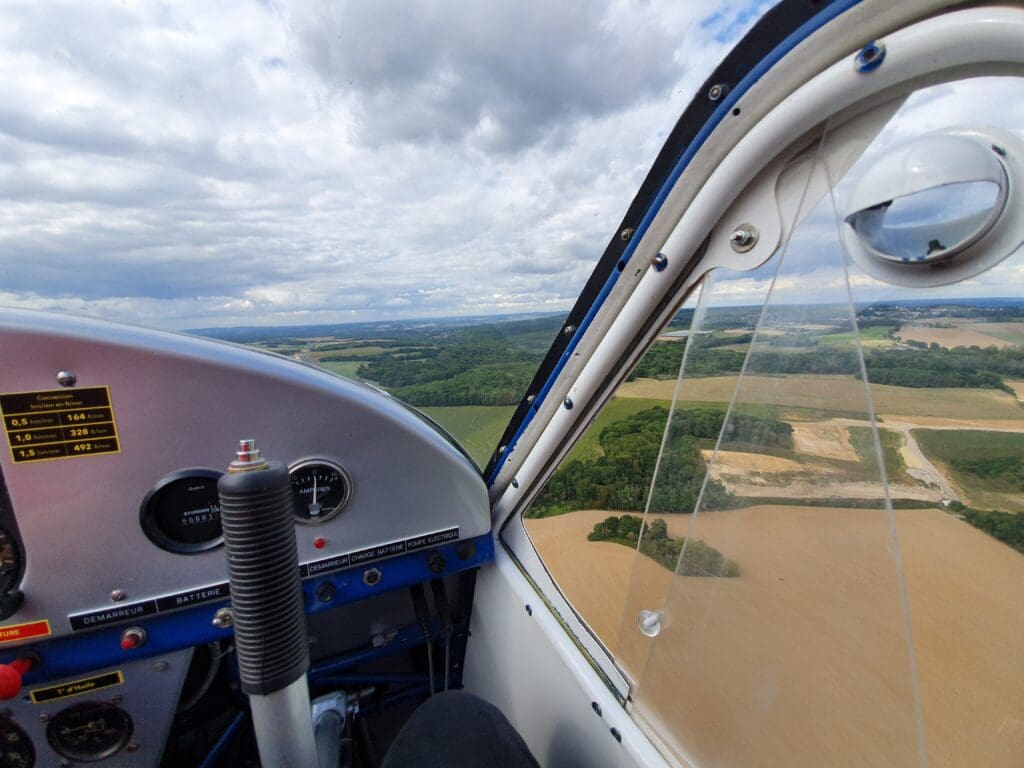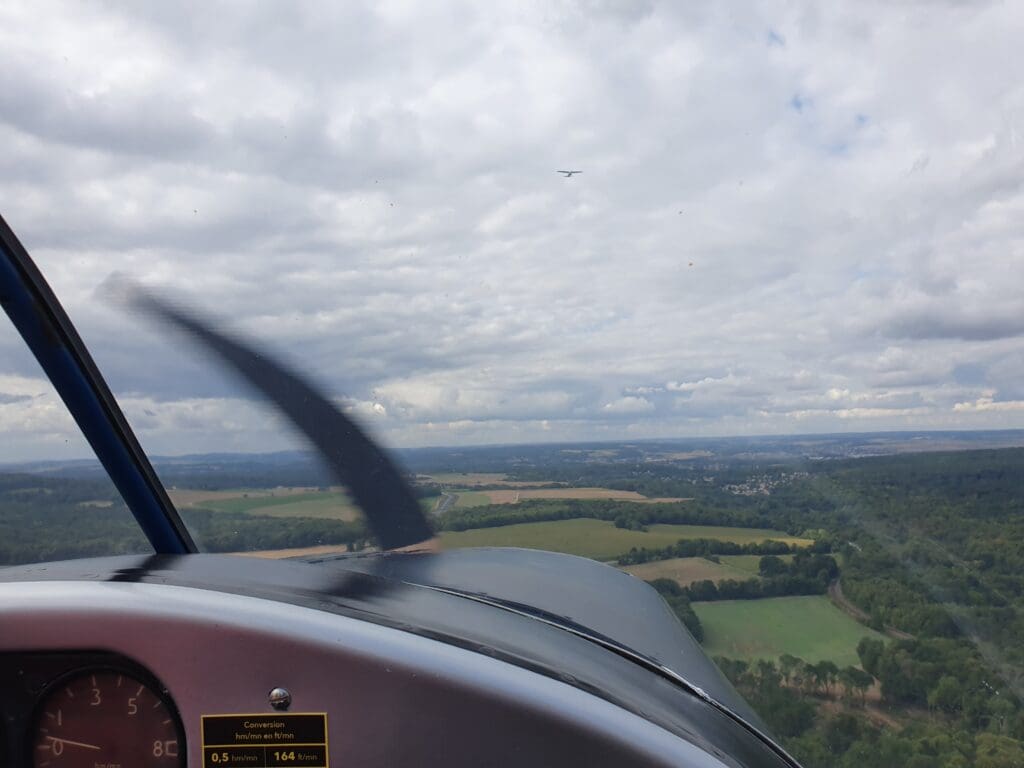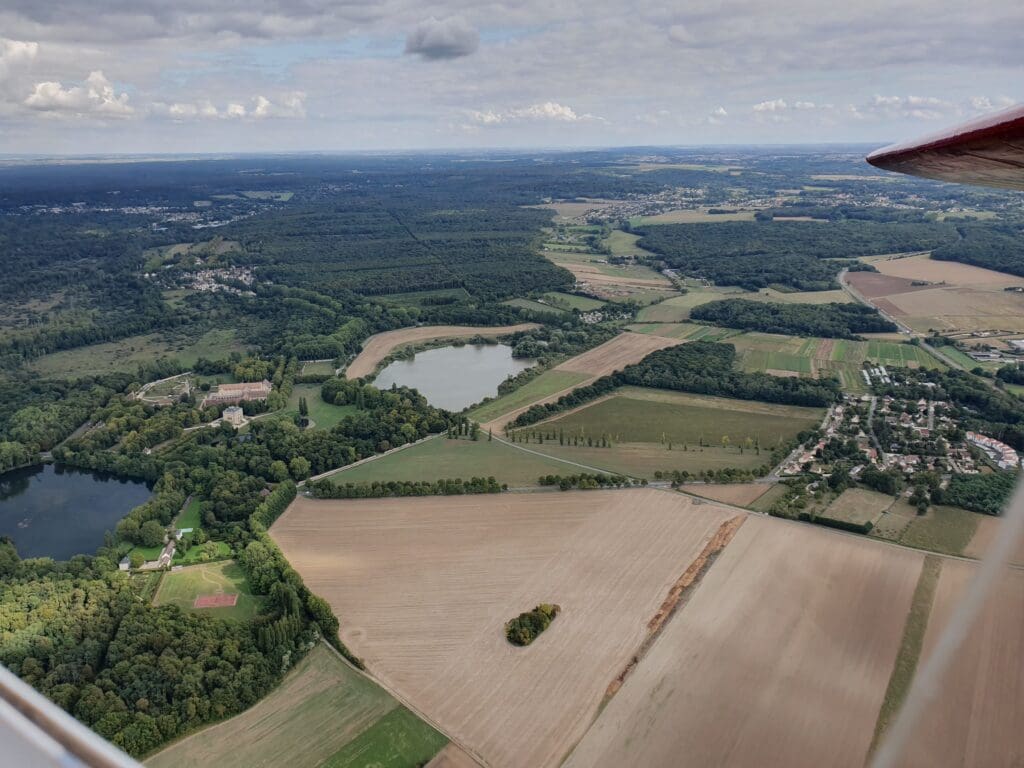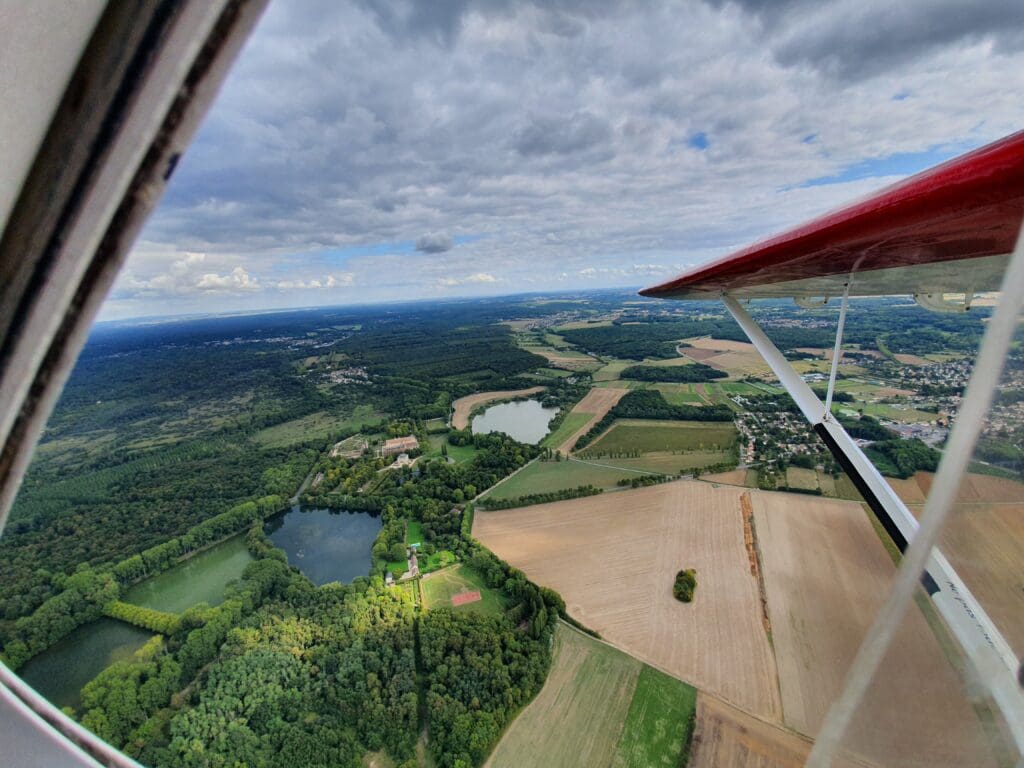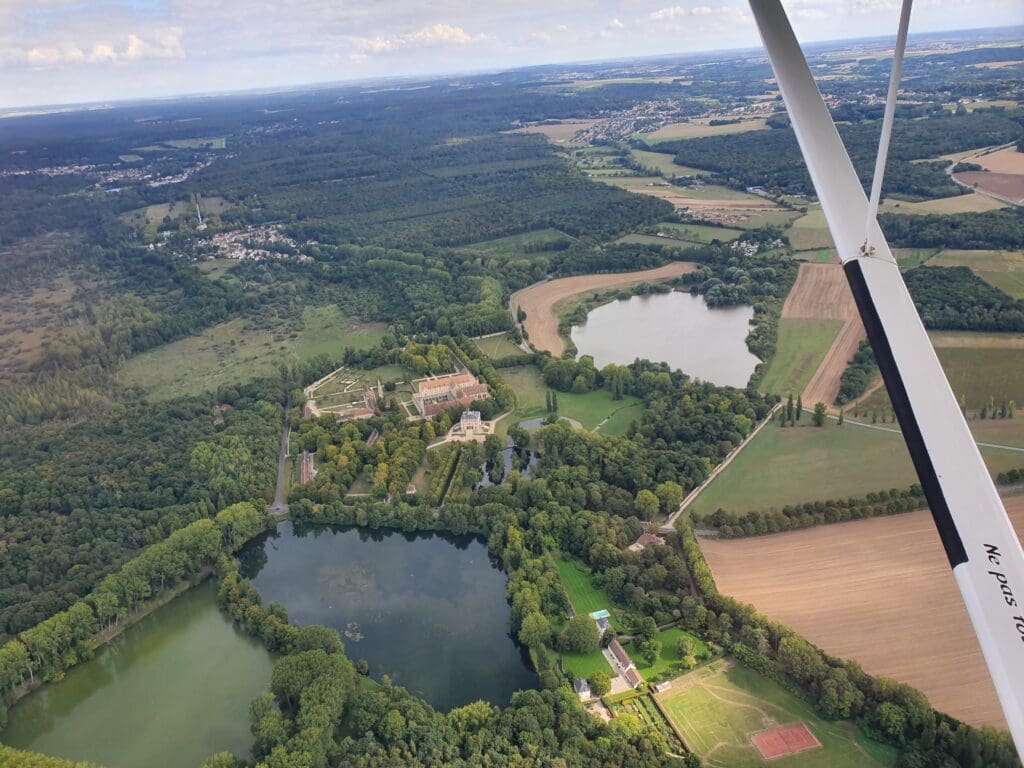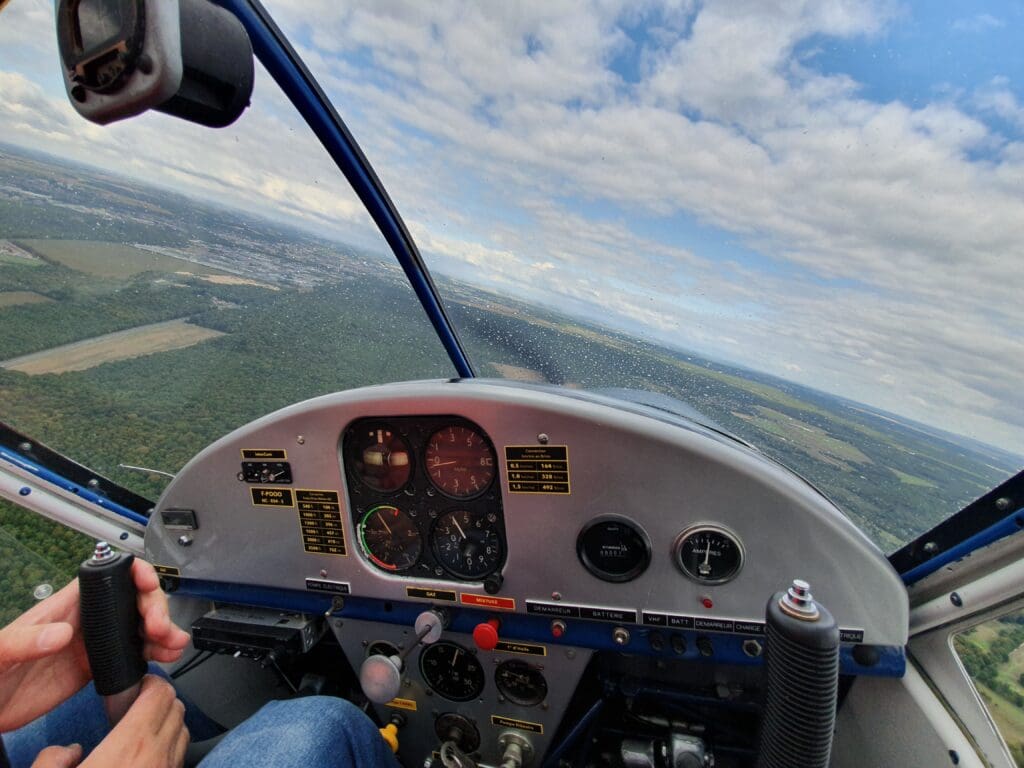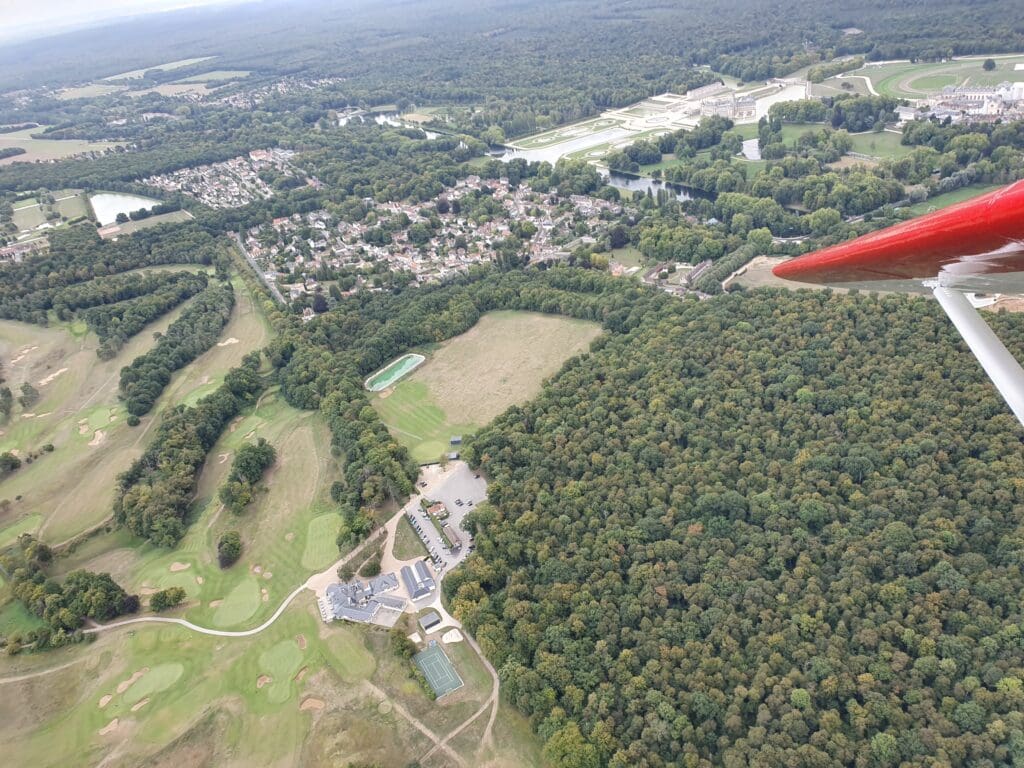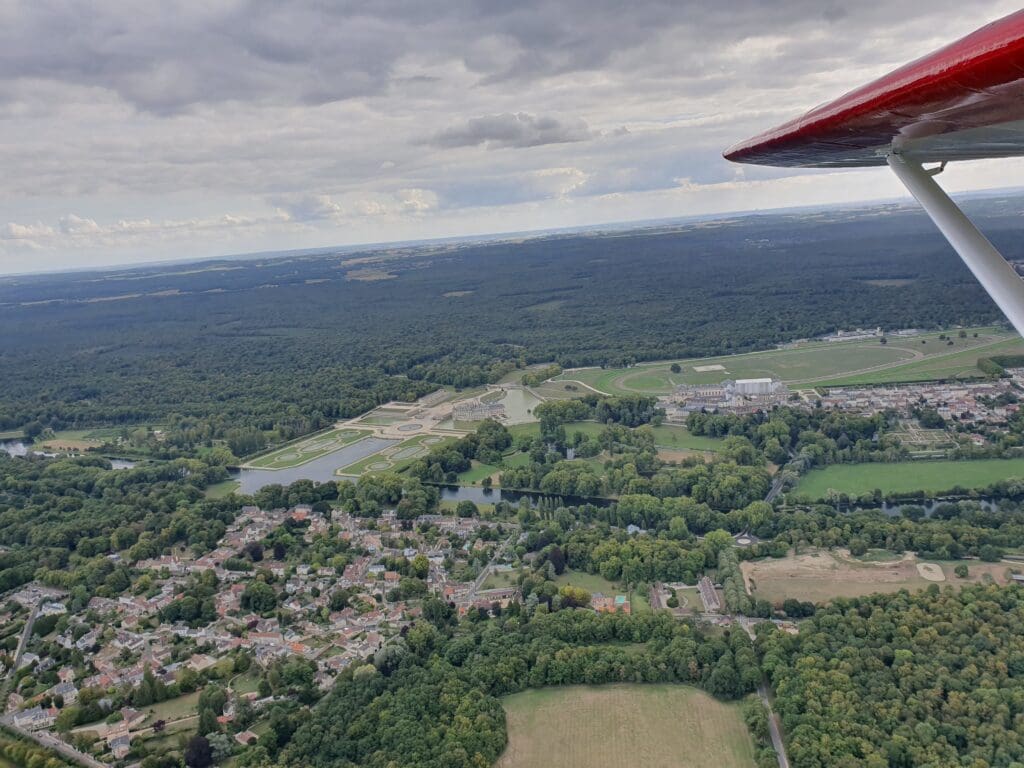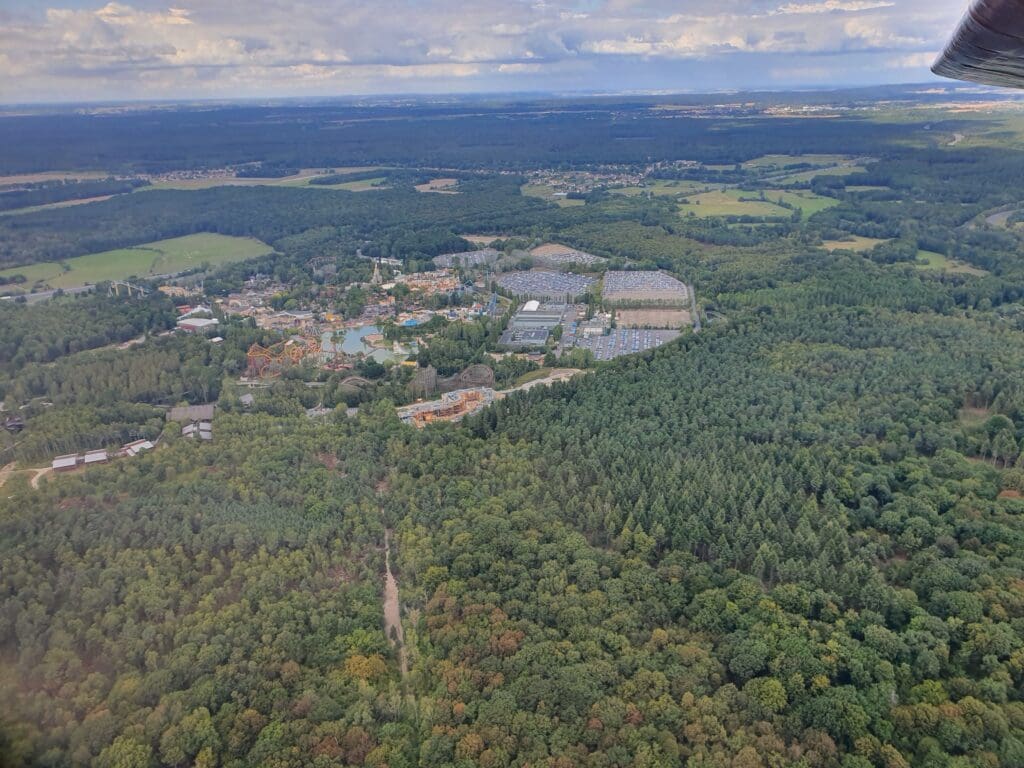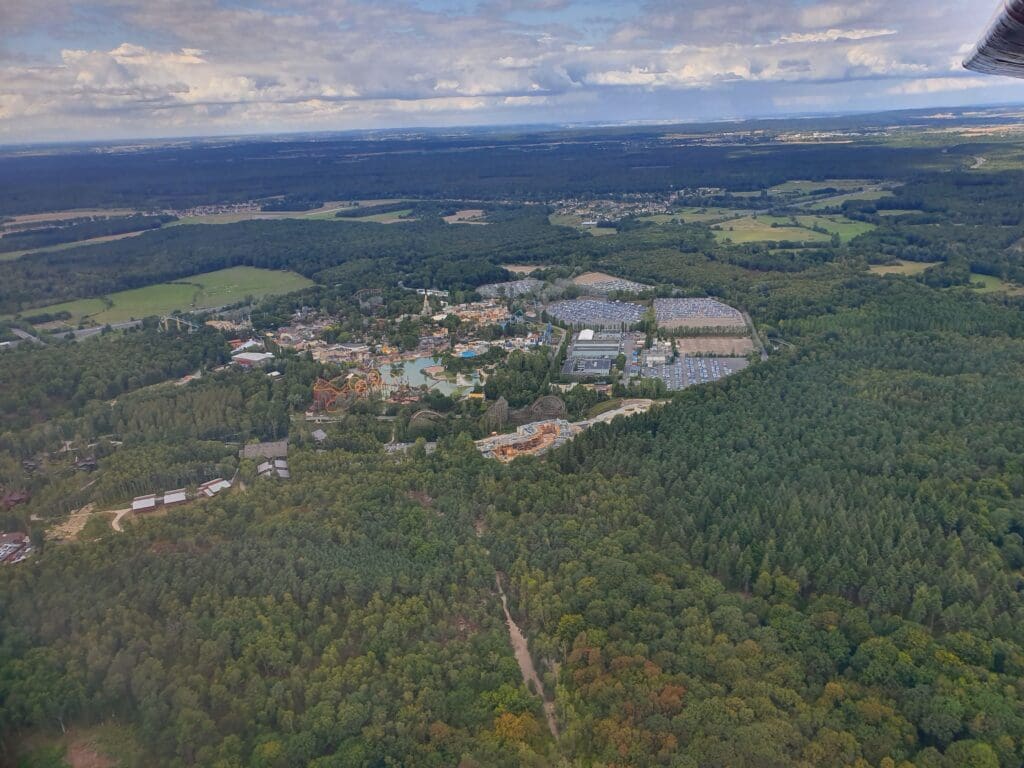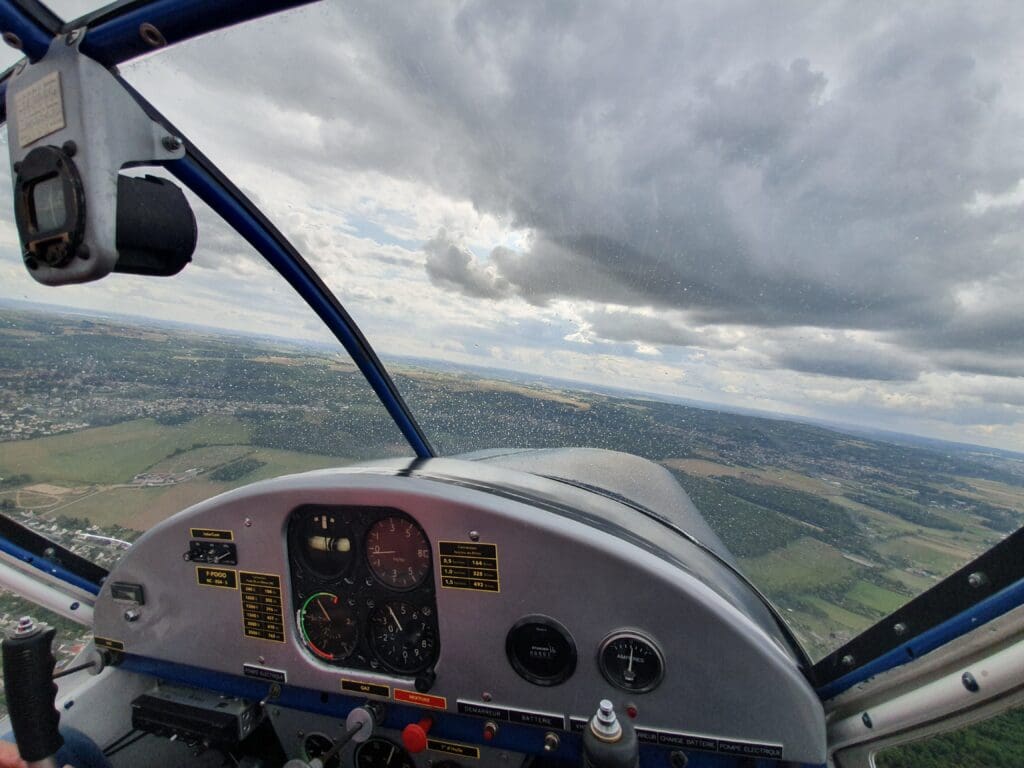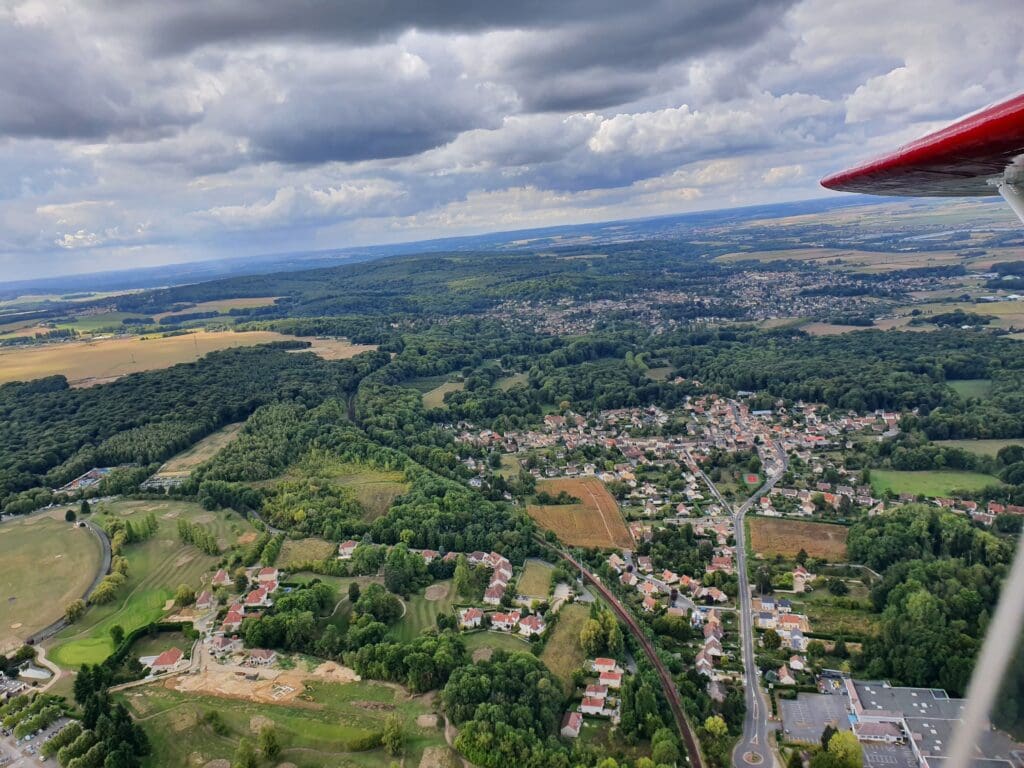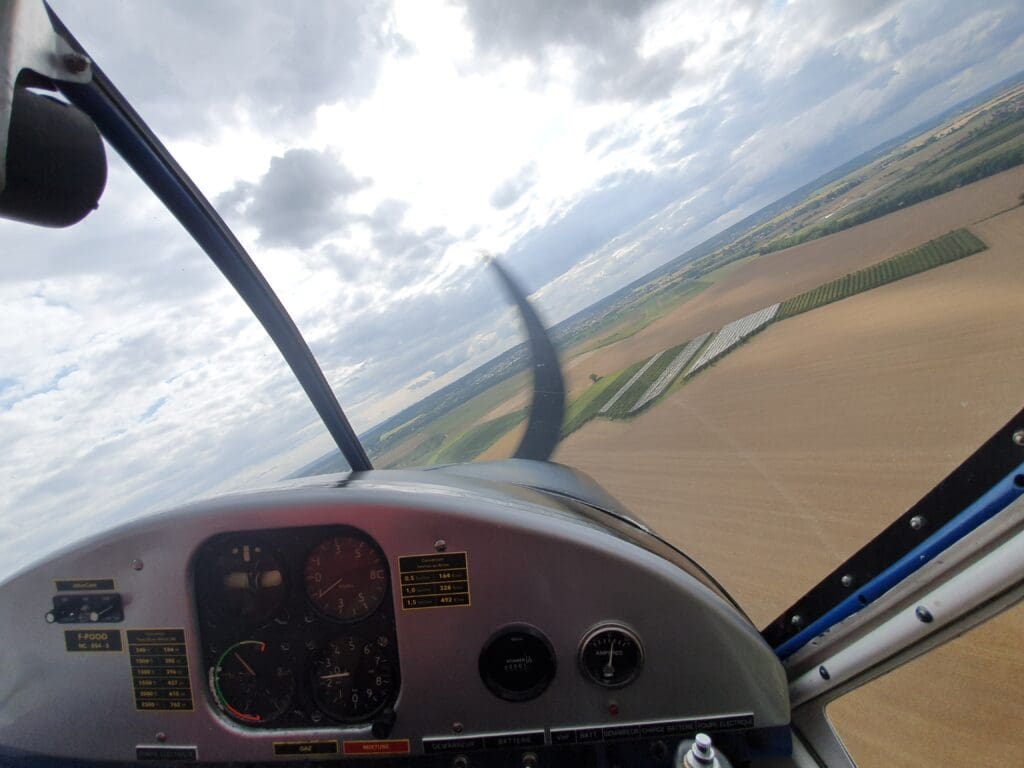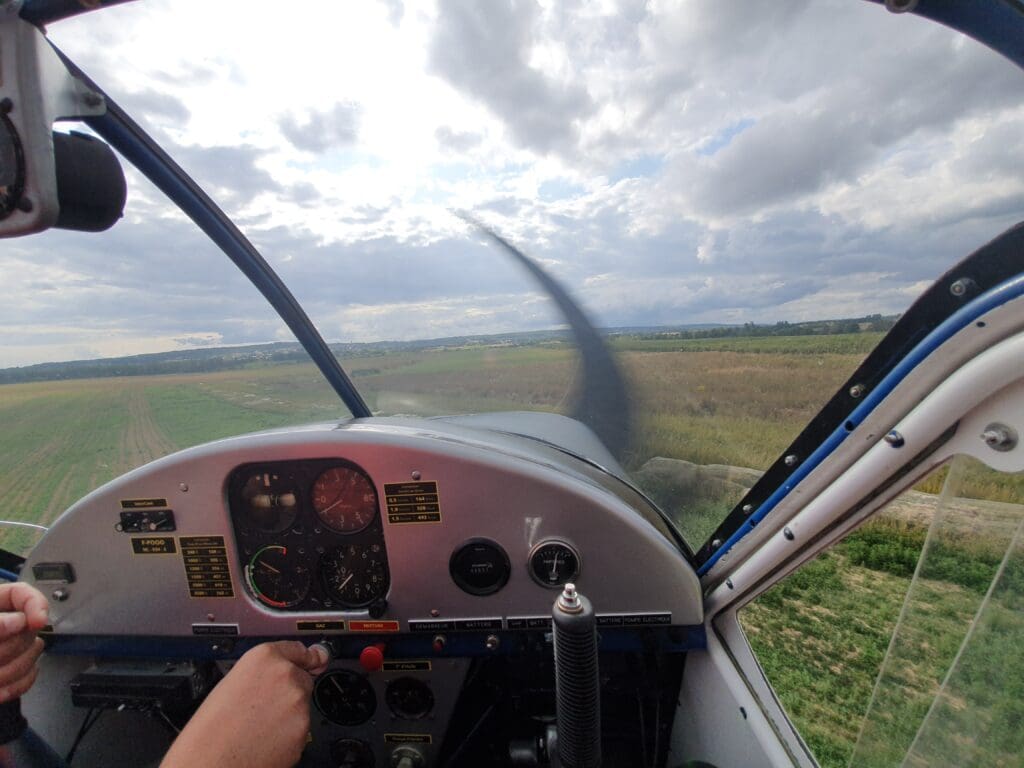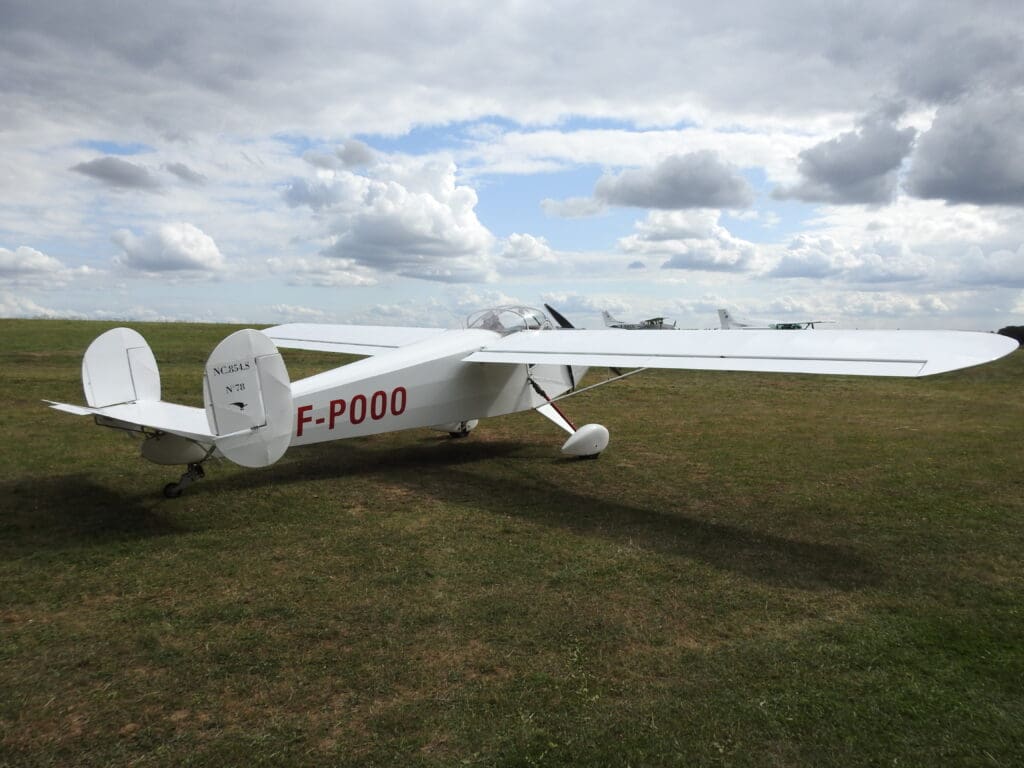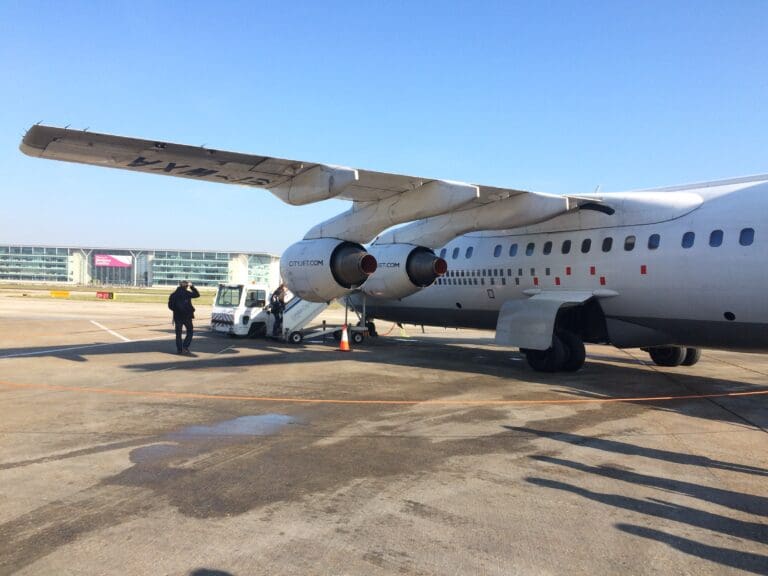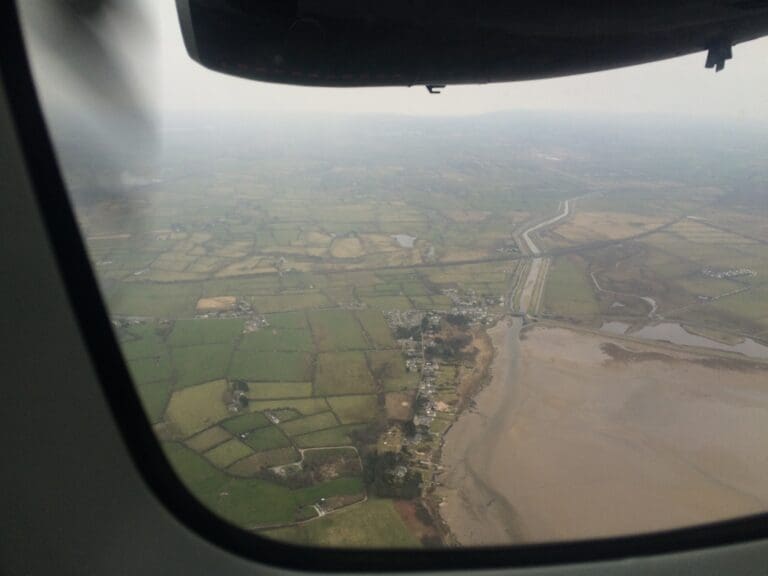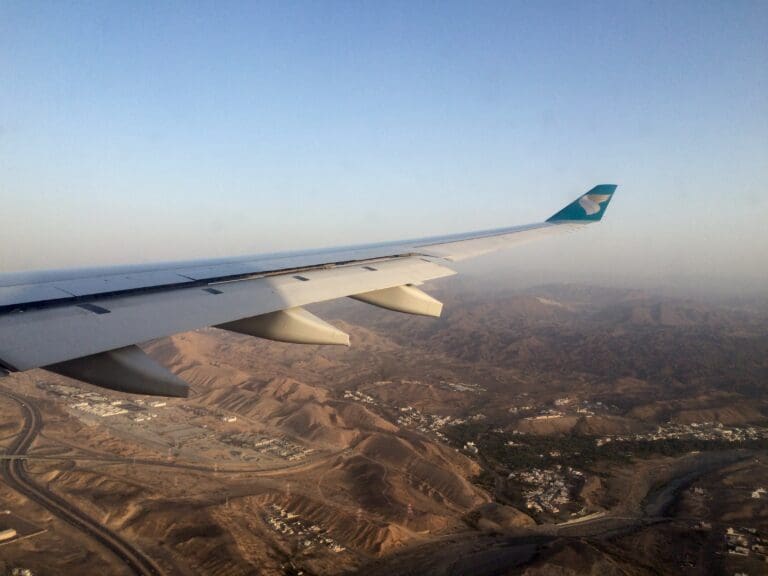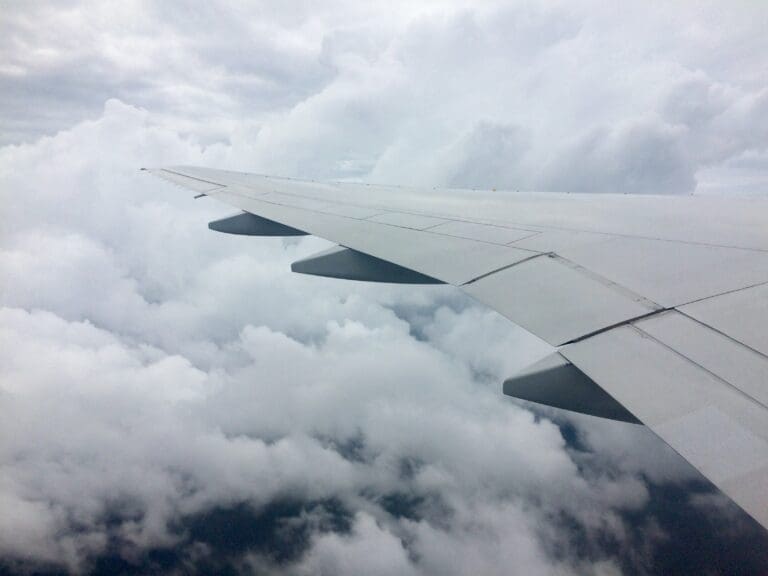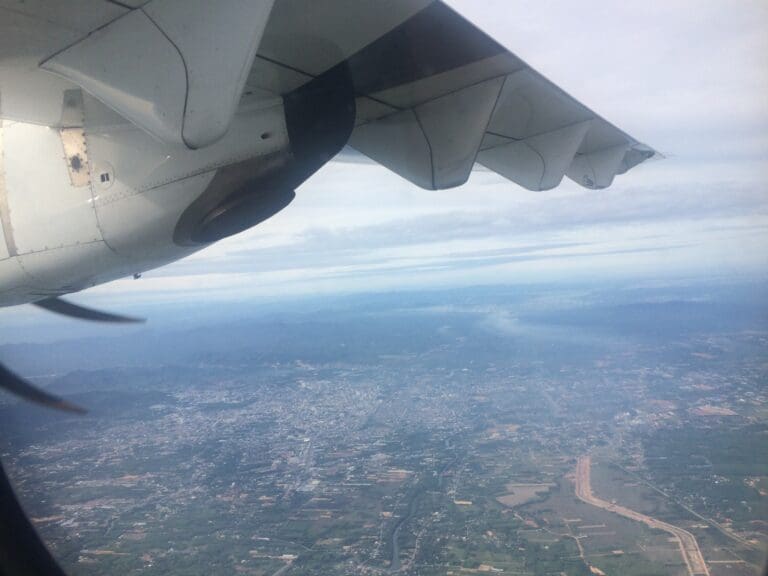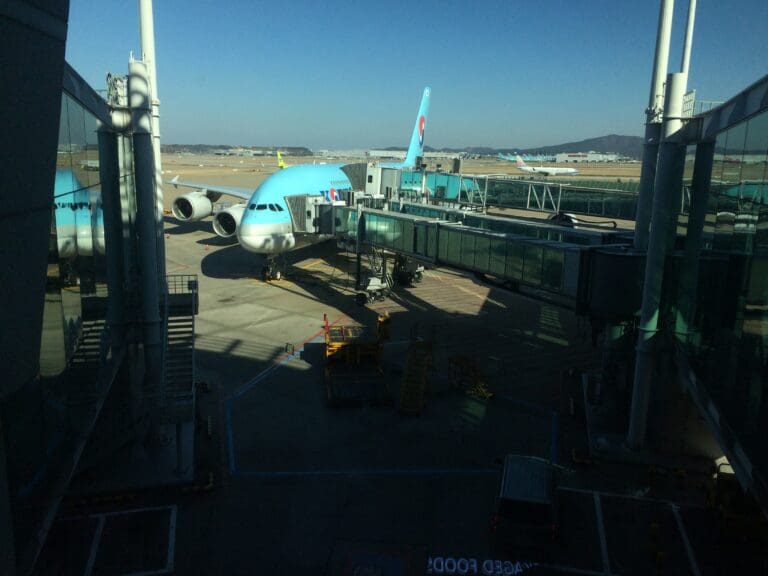Pootling Around Paris in a Vintage Nord NC.854
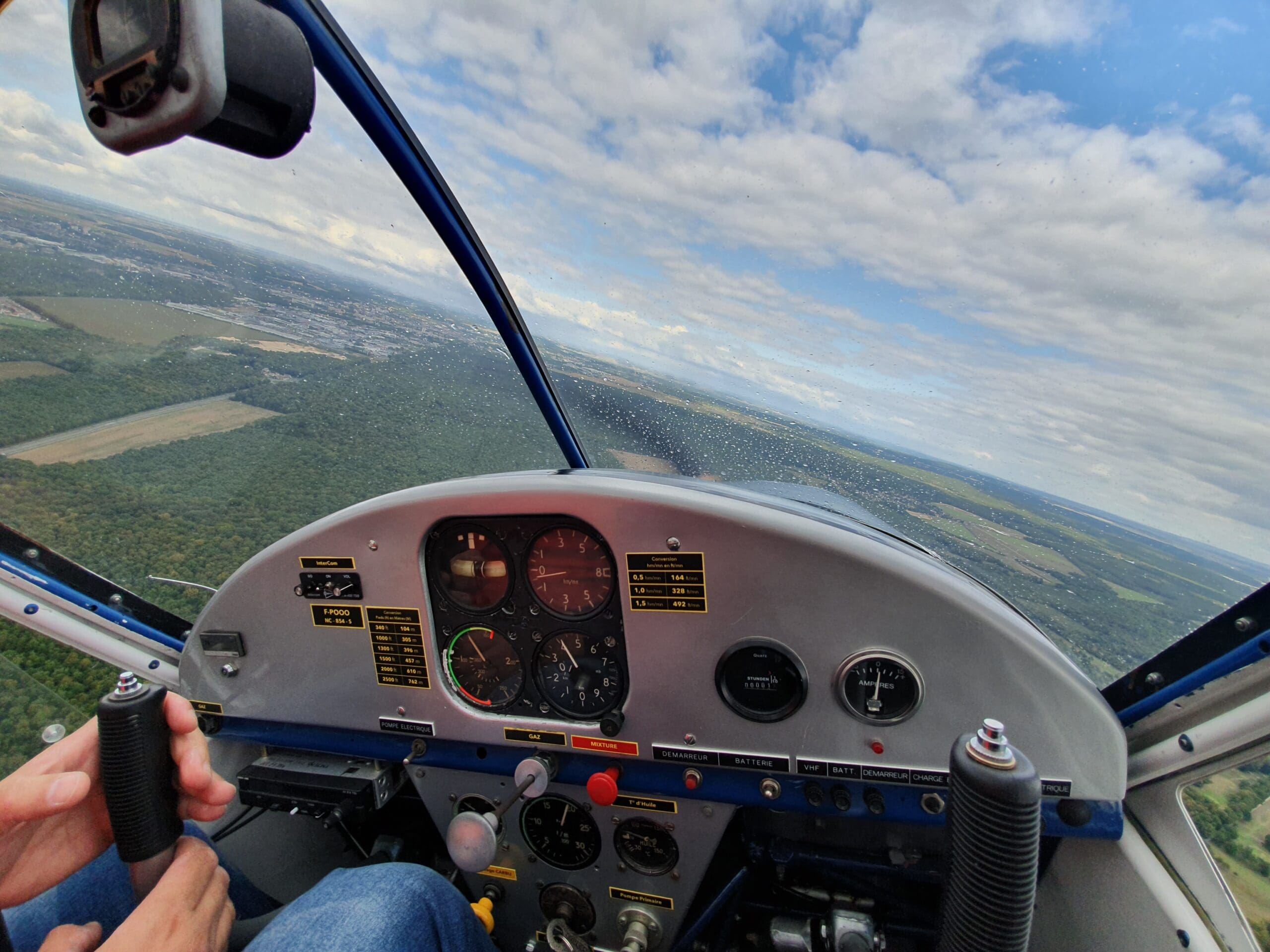
Background
Between July 2019 and January 2020, I called Paris home – ending up there as an intern working in the periphery of general aviation. Wanting to get up in the air and see France from above during my time in the country, I decided to enlist the help of Wingly, a flight sharing platform that enables pilots to split the costs directly associated with their flight with a passenger, or passengers, that they are able to connect to via the company’s website. With this flight sharing model offering much cheaper options than formal bapteme de l’airs, once settled into life in Paris, I decided to enlist the help of Wingly and soon discovered a very cheap €50 one-hour jaunt around the skies to the north of Paris. Whilst my primary purpose was to have a bit of fun and experience the world of French general aviation, as an enthusiast I was delighted to find that the flight would be operated by the rare locally manufactured Nord NC.854.
The Flight
Flying in September, with the intense Parisian heat, balmy humidity and sporadic rain showers of August having left us behind, and the temperamental autumn weather yet to roll in, I was hopeful that my flight would go ahead as planned. Indeed, with the forecast looking good, when the morning of the flight rolled around, the pilot confirmed that this would go ahead and I was advised to be at the local station near the airfield for 1430. Following a quick and easy ride out of Paris on a local train service, I arrived and was greeted by the jolly French pilot that would be taking me flying that afternoon.
Following a quick journey in their Peugeot, we pulled up next to Enghien Moisselles Airfield’s clubhouse. Compared to Paris’ sprawling aviation hub at Toussus-Le-Noble Airport near Versailles, Enghein Moiselle is miniscule yet has a much more welcoming and relaxed atmosphere and it appeared that everyone knew everyone. This airfield dates back to 1931 when it opened as a gliding site, before it was soon invaded by powered light aircraft and became home to the Aéroclub de Royan. This continued to see a fair amount of expansion over the coming decades, although its growth has been restricted thanks to the presence of the nearby megahub, Paris Charles de Gaulle. Thus, this is home to a relatively small collection of light aircraft, and, from what I gathered through my broken French and the pilot’s broken English, this does not typically host visiting aircraft.
Following a quick tour of the clubhouse where the pilot pointed out several photos of the airfield throughout its history, I was taken out to one of the two hangars where I was treated to my first glimpse of the aircraft that I would be flying that day. As a twin-tailed taildragger, this was certainly more distinctive than the airfield’s Cessnas and Pipers, and sported a smart red and white livery.
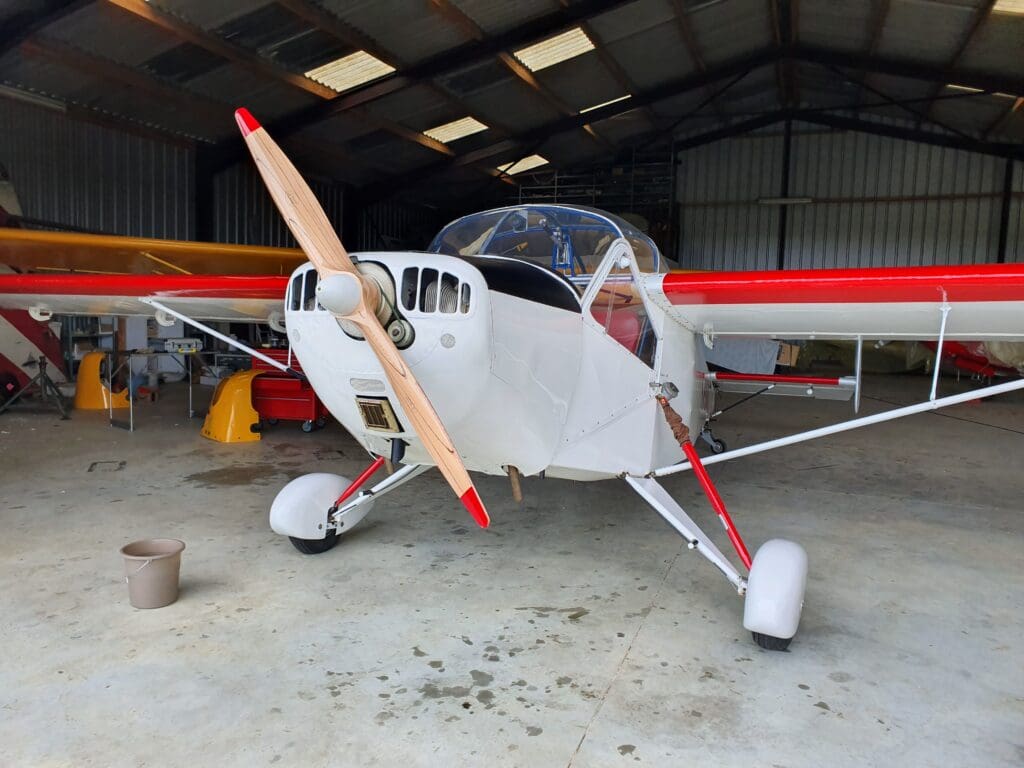
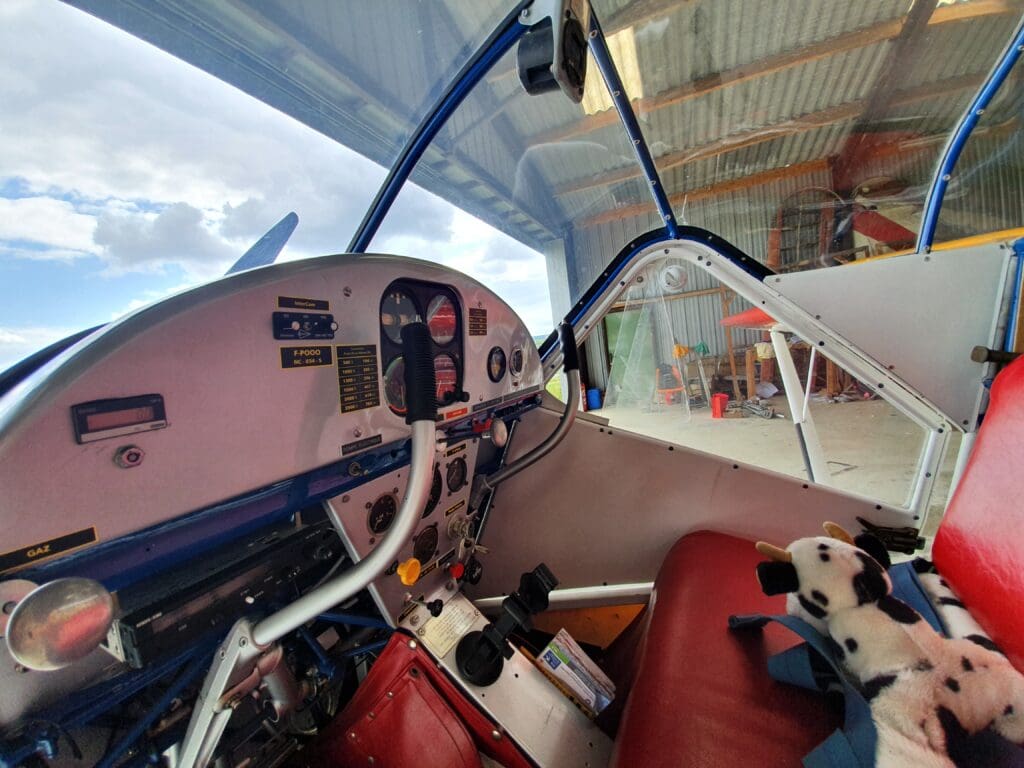
Hailing from Britain, the country’s general aviation scene is dominated by Cessnas and Pipers, and with just a very small handful flying in the UK, the Nord NC.854 was not an aircraft type that I had ever come across before, let alone fly. This distinctive twin-tailed light aircraft was designed by the state-owned Société Nationale des Constructions Aéronautiques du Nord, more commonly known as Nord, in the post-war period. This was intended to primarily serve as a lightly powered training aircraft, although the type was later developed into an airborne observation post, the Nord NC.856 Norvigie, whilst other variants include a four-seat and a triple-tailed floatplane version. As a relatively forgiving and cheap to operate aircraft, the type proved popular with flying clubs across France, although the rapid march of technology in the post-war era meant that its production run was short, lasting from just 1946 to 1953, with around 160 examples manufactured. This particular aircraft came in the form of Nord NC.854-S F-POOO. Manufactured in 1951, this aircraft was the 78th example to be manufactured and has always been based in its homeland, France.
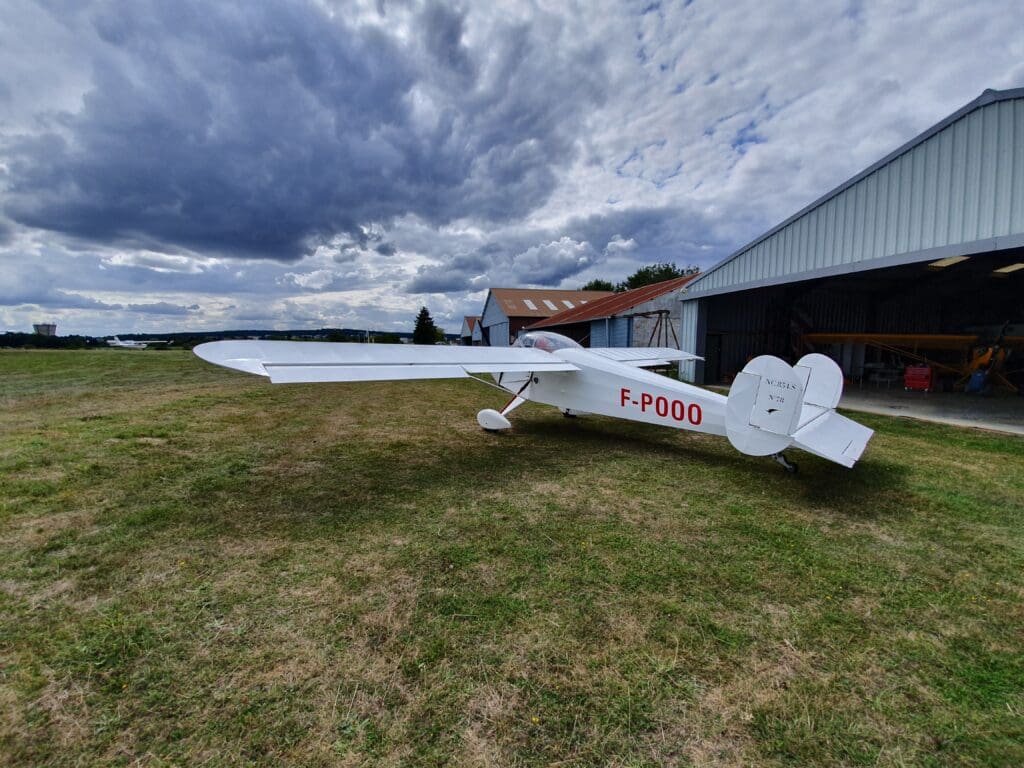
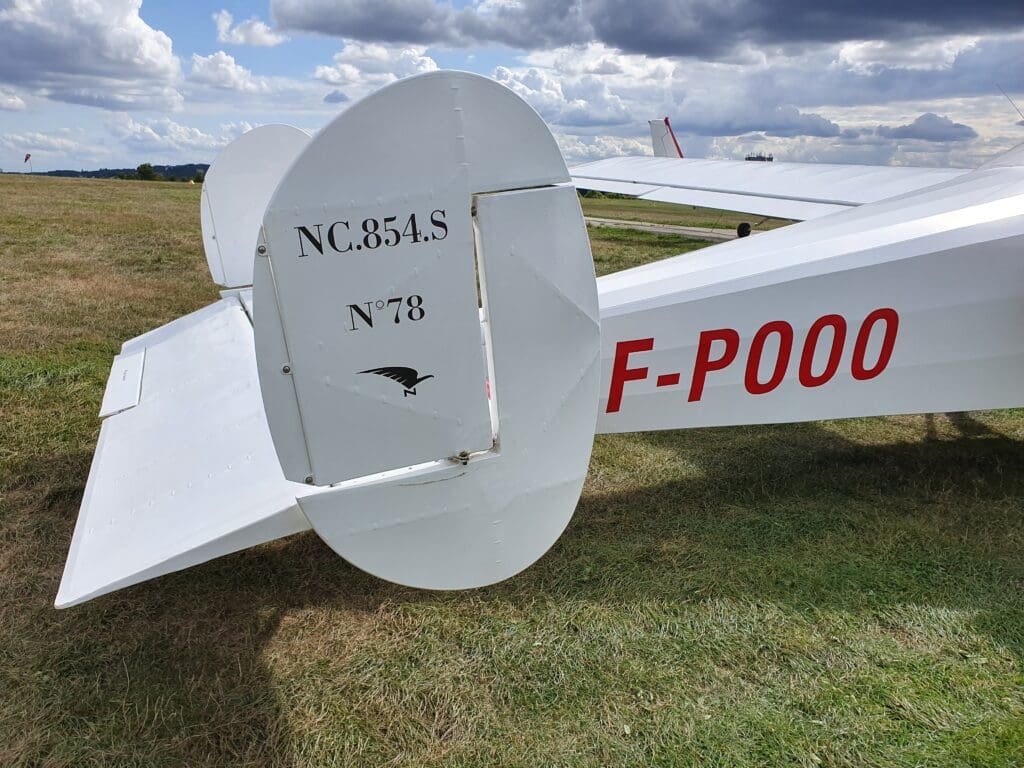
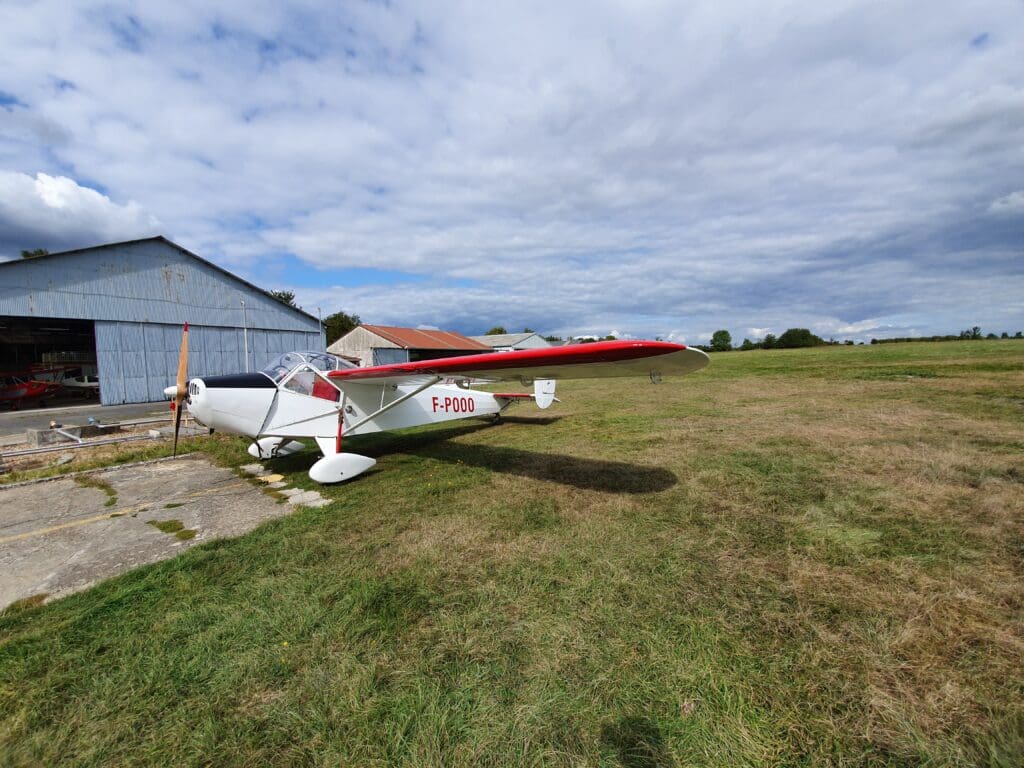
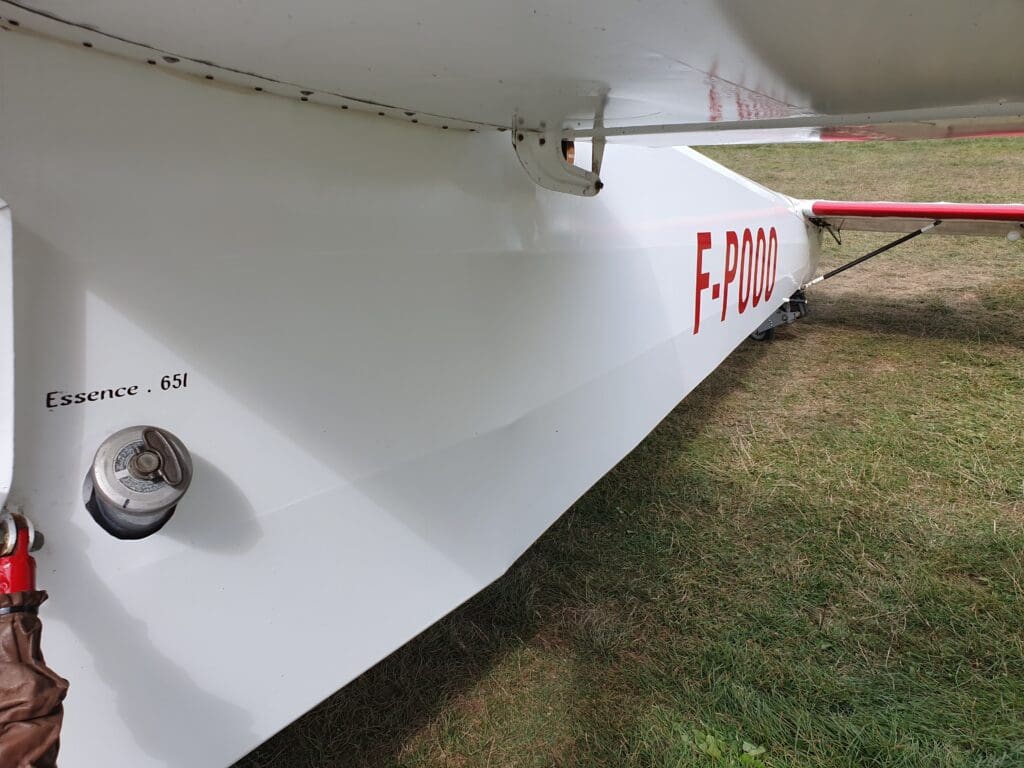
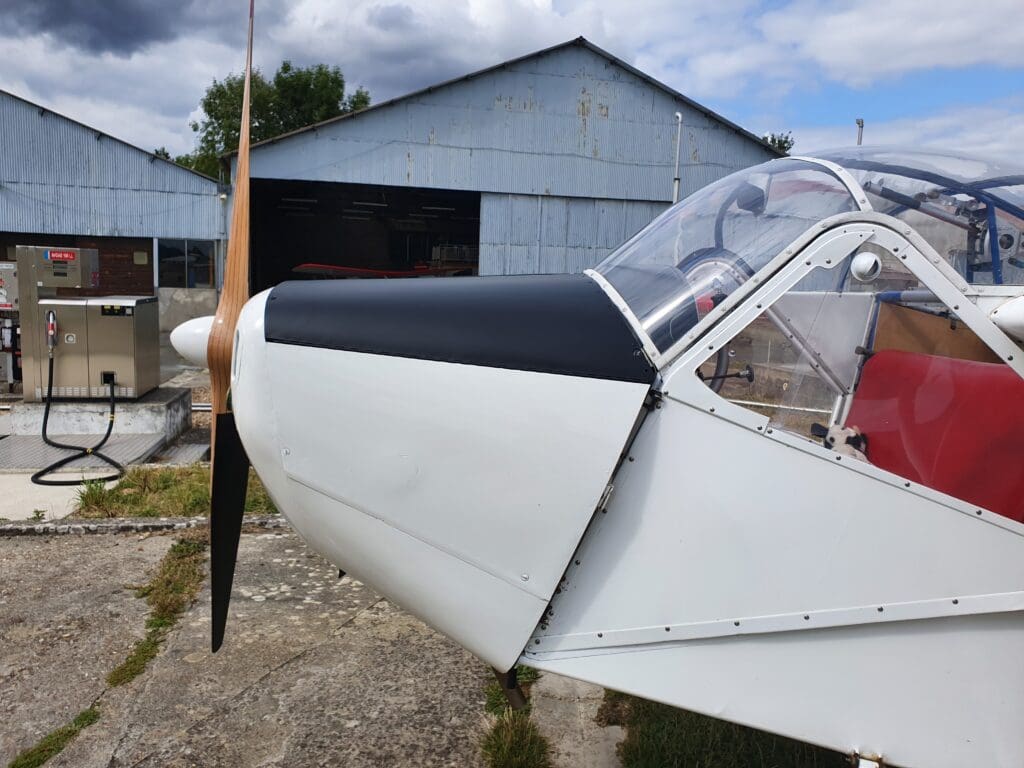
Once I had assisted in pushing the aircraft out of the hangar and positioned this up to the fuel station, the pilot pumped fuel into the aircraft and once done, we rolled this away before I was able to squeeze myself into the cockpit. Having flown on a fair number of light aircraft, it is fair to say that I am not claustrophobic. Nevertheless, the cockpit of the Nord was a tight squeeze for two fully grown men, and we cosied up on the bench-style seat and elbowed each other as we strapped ourselves in for the ride ahead.
Inside, the cockpit of the Nord is rather basic, with just a limited number of crucial instruments located in the centre of the panel – the lack of these ensures that the aircraft can only operate in VFR conditions. Interestingly, the altimetre came in metres, the airspeed was provided in kilometres per hour, and the vertical speed indicator came in HM per minute – although several tables were provided to enable the pilot to quickly convert these to their imperial equivalent. Meanwhile, given the aircraft’s age, with this being the pride and joy of the aircraft, the cockpit was in superb condition, with few signs of marks or scratches.
Following a short pause, I donned a headset and the noisy Continental engine powered up in front of us. Once the pilot had ran through all their checks, we were soon off and performed a gentle takeoff roll before taking to the skies. Whilst I will not provide a full overview of the flight – all of the photos of this can be found below.
